Pizza Pan or Stone: Which Gives the Best Bake?
Pizza pans and pizza stones represent two popular options for home bakers seeking that perfect crispy crust.
Many cooking enthusiasts debate which tool delivers superior results in their kitchen adventures.
The metal construction of pans offers quick heating and easy cleanup after your cooking session.
Meanwhile, stones absorb moisture from the dough, creating that authentic brick-oven texture that so many pizza lovers crave.
Some home chefs prefer the convenience factor, while others prioritize achieving restaurant-quality results.
Each option comes with its own set of advantages depending on storage space, cooking style, and desired outcome.
The perfect choice ultimately depends on what matters most to you when creating delicious homemade pizzas.
The Overview of Pizza Pans
Pizza pans are specially designed cookware for baking pizzas, featuring raised edges and flat bottoms that hold your dough in place. These pans absorb oven heat effectively, transferring it directly to the crust for proper cooking.
Most manufacturers craft them from metals with excellent heat distribution properties, ensuring your pizza cooks evenly throughout. Cast iron versions exist but aren't as popular because they tend to be heavy and don't conduct heat as efficiently.
Many pizza pans come with small holes across the bottom surface, allowing steam to escape during baking for a crispier crust result. For those who prefer Chicago-style or deep-dish pizzas, special pans with taller sides are available to accommodate the thicker dough and generous toppings these styles require.
How To Use A Pizza Pan
Making delicious pizza at home requires a few simple steps with your pizza pan. First, spray the pan with non-stick cooking spray or brush it with olive or peanut oil to prevent sticking and add flavor to your crust.
Next, roll your dough to your preferred thickness using a rolling pin, sprinkling some flour over it to avoid sticking. Then press the dough carefully into the pan, ensuring it makes contact with the sides without standing taller than the edges, which helps prevent burning.
After that, top your pizza with mozzarella cheese, tomato sauce, and all your favorite ingredients. Finally, place the pan in a preheated oven and bake at 400°F (204°C) for about 15 minutes until golden and bubbly.
This straightforward process gives you an amazing homemade pizza that tastes better than delivery!
What is Pizza Stone?
Pizza stones actually come in various materials beyond stone, including steel, ceramic, cast iron, and cordierite. This handy kitchen tool distributes heat slowly and evenly under your baked goods, mimicking the results of a traditional brick oven.
Heat gets trapped and held within the surface, giving dough an immediate temperature boost that makes crusts puff up beautifully on contact.
Baking stones trace back to ancient times when early humans used heated rocks to cook food.
This primitive technique endures today in pizza making. In the 1970s, critic Pat Bruno popularized baking stones in modern kitchens after being inspired by Julia Child, linking today’s cooking to ancient traditions.
How To Make Pizzas With A Pizza Stone
Baking pizzas with a pizza stone requires a bit of work, but the results are truly worth it! Your homemade pies will have that amazing crisp crust like the ones from top restaurants once you master these easy steps.
The stone needs about 30 minutes to heat up properly in your oven before you start cooking. When it's time, just slide your prepared pizza onto the hot surface with a smooth motion.
After a few tries, this process becomes second nature, and soon everyone will ask for your secret to making such perfect pizza at home.
Pizza Pan vs. Pizza Stone: The Comparison
Pizza pans and pizza stones offer different traits. Here is a comparison table to check.
| Feature | Pizza Pan | Pizza Stone |
| Materials | Aluminum, aluminum steel, sometimes ironclad | Ceramic, stone, reinforced cast iron or steel |
| Sizes & Shapes | Various sizes; round, square, rectangle popular | Mostly round or square; generally smaller due to weight |
| Weight & Durability | Lightweight (1-3 lbs); very durable, resists damage | Heavy (10-17 lbs); fragile, can crack or shatter; sensitive to thermal shock |
| Storage | Thin, easy to store; often stackable; some have handles | Bulky and heavy; tricky to store; requires careful handling and drying |
| Heat Distribution | Uneven heat; non-perforated pans trap steam, limiting crispiness; perforated pans cook faster but can cause dough to sink | Excellent heat retention and even distribution; preheated stone caramelizes crust and absorbs moisture for crispiness |
| Ease of Use | Convenient and lightweight; can prepare and bake on the same pan; requires seasoning | Requires preheating; careful not to spill ingredients; needs pizza peel and practice |
| Cleaning | Easy to clean; smooth surfaces, some non-stick | Difficult to clean; porous surface traps food; no soap allowed; must avoid temperature shocks |
| Cost | Affordable; good investment | Expensive; made from premium materials; often requires extra purchase of pizza peel |
Materials, Sizes, And Shapes
Pizza pans typically come from aluminum, aluminum steel, or sometimes ironclad materials in round, square, and rectangular shapes that let you cook pizzas just how you want them. In contrast, pizza stones consist of ceramic or stone, with some versions made from reinforced cast iron or steel.
These stones usually appear in only round or square forms, not the variety of shapes that pans offer. Most stones run smaller than pans because their hefty material makes larger sizes too heavy and unwieldy.
The different construction of these tools affects not only their appearance but also how your pizza turns out when you bake it at home.
Weight And Durability
Pizza pans tip the scales at just 1-3 pounds, making them super easy to handle in your kitchen, while pizza stones can be quite hefty at 10-17 pounds. Your pizza pan wins the durability contest since it can take a tumble with only minor scratches, unlike those fragile pizza stones that might shatter on impact.
The delicate nature of ceramic and clay stones extends beyond drops - they don't handle temperature changes well either. Running cold water over a hot stone after baking can spell disaster as the sudden change can create cracks or completely break your stone apart.
Storage
Due to their thin and lightweight design, pizza pans are easy to store, stack, and even hang if equipped with handles, making them convenient for kitchens with limited space. Pizza stones are bulky and heavy, making storage cumbersome, and they require careful handling and natural air drying to prevent damage.
Heat Distribution And Heat Retention
Pizza pans generally have uneven heat distribution; non-perforated pans trap steam, leading to less crispy crusts, while perforated pans improve crispiness but may cause dough to sink through holes. Pizza stones excel in retaining and evenly distributing heat, quickly caramelizing the pizza base while absorbing moisture from the dough to produce a crisp, flavorful crust.
Ease Of Use
Pizza pans offer a simple way to make your full pizza creation without needing fancy tools. The lightweight design makes pizza assembly quick as you add cheese, toppings, and sauce all in one place.
Seasoning your pan prevents sticking and eliminates the need for butter or oil coatings - something pizza stones don't require. Many problems with stones happen when ingredients spill over, causing smoke and odd flavors in your oven.
Pizza stones also need proper preheating, otherwise you might end up with doughy, undercooked crust. For those using stones, a pizza peel becomes essential for moving your creation around.
The technique takes some practice to master so you don't tear the bottom of your carefully crafted pizza. Better skills with your pizza peel can make the whole process much smoother and more enjoyable.
Ease Of Cleaning
Pizza pans come with the bonus of easy cleanup thanks to their smooth, flat surfaces where soap and a sponge quickly remove stuck-on residue. Many models feature non-stick coatings that make the job even faster.
Pizza stones, however, require more effort since their porous surfaces trap crust bits and moisture, creating potential bacterial breeding grounds. For proper stone maintenance, wait 1-2 hours after baking, then gently brush under running water to remove food particles.
Never use soap or detergent on stones as they absorb these chemicals and can transfer unwanted flavors to your next pizza. The pores that make stones tricky to clean are actually what help create that perfect crispy crust, so the extra care is worth it.
Cost
Pizza pans save you money compared to buying ready-made pizzas from restaurants. Their cost advantage becomes even more apparent when compared to pizza stones, which typically come with hefty price tags due to their premium construction materials like reinforced ceramic, terra cotta, cast iron, or high-grade steel.
Top-of-the-line pizza stones can be three times more expensive than a good pizza pan. Plus, stones usually require a pizza peel for proper handling, adding another expense to your kitchen setup if you're watching your budget carefully.
Best Brands for Pizza Pans And Pizza Stones
Finding the right pizza-making tools can be tough with so many options online. My top picks include both traditional stones and modern pans that help create that perfect crispy crust at home.
Honey-Can-Do
Pizza lovers worldwide have trusted Honey Can Do since 2008, with their 12 x 14-inch Foldable Pizza Peel making home baking much easier. This handy tool has won fans among serious pizza makers because of its excellent heat handling and quality aluminum design.
The well-crafted peel lets you move pizzas to and from hot ovens without any hassle. Thousands of happy customers rely on this smart kitchen helper for perfect homemade pies.
With its solid construction and user-friendly features, the pizza peel stands out as a must-have for anyone who enjoys creating delicious pizzas in their own kitchen.
Wilton
Ready for a bigger pizza pan? Wilton's 14-inch Perfect Results Premium pan might be just what you need.
The sturdy steel construction keeps its shape without warping, while the non-stick coating means your pizza slides right off when done. Cleanup is a breeze too - no more scrubbing away at stuck cheese or sauce.
This reliable pan handles family-size pizzas with ease, giving you plenty of room for all your favorite toppings.
American Metalcraft
Budget-friendly pizza lovers can't go wrong with this 16-inch wide-rim pan. Made from heat-conducting aluminum, it helps cook your pizzas evenly while being super easy to clean after use.
Many size options are available to match your exact needs, from personal pizzas to family-sized feasts. This pan delivers great results without breaking the bank, making homemade pizza night both simple and affordable.
Tips to Use Pizza Pan and Pizza Stone Properly
To extend the shelf life of your pizza pan or pizza stone, make sure you know these tips.
Tips for Pizza Pan
Tips for Pizza Stone
Got Questions? We’ve Got Solutions
1. Do I need to preheat both pizza pans and stones?
Pizza stones must be preheated for 30-60 minutes before use. Pizza pans typically don't require preheating, making them more convenient for quick meals.
2. Which one is easier to clean?
Pizza pans are much easier to clean - simply wash with soap and water. Pizza stones should never use soap, only water and gentle scraping, as they're porous and absorb flavors.
3. How long do pizza stones and pans last?
A quality pizza pan can last 5+ years with proper care. Pizza stones can last indefinitely if handled carefully, but they're prone to cracking if dropped or exposed to sudden temperature changes.
4. Can I use pizza pans and stones for other foods?
Both are versatile! Pizza pans work well for cookies, roasted vegetables, and baked goods. Pizza stones are excellent for bread, pastries, and even reheating leftovers for a crispy texture.

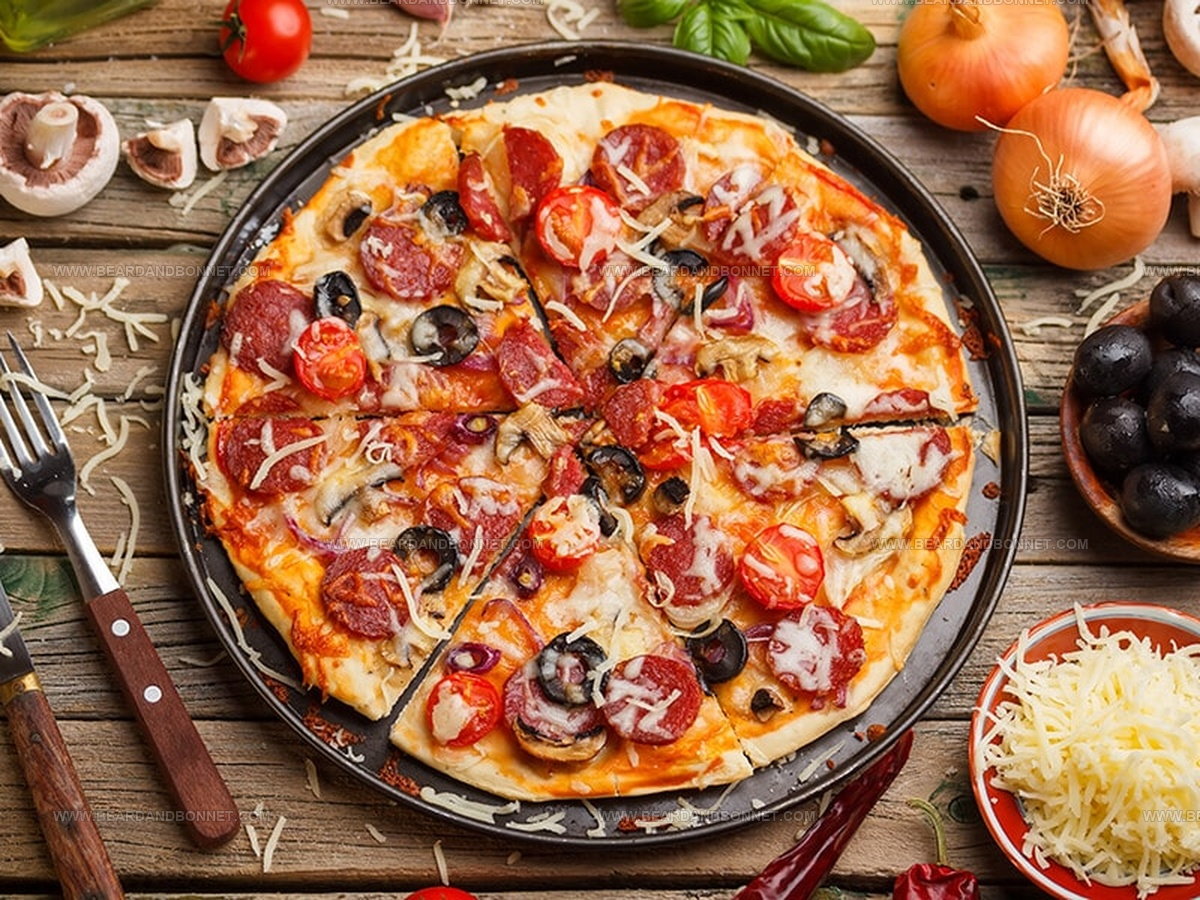
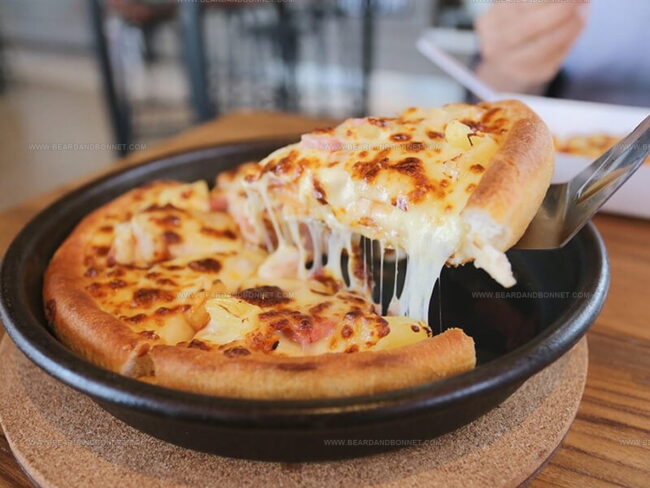
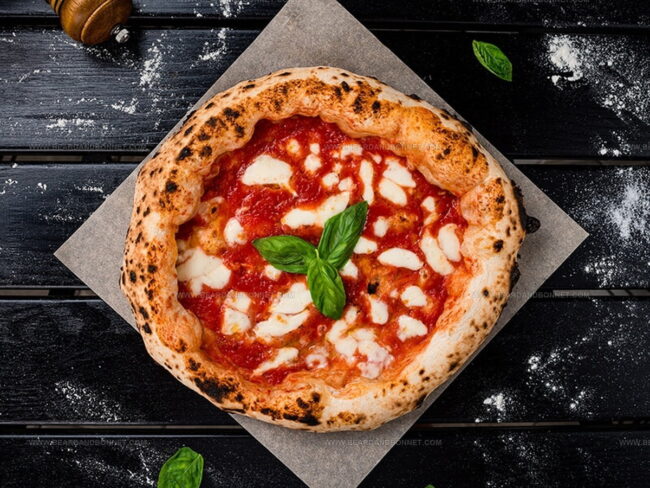
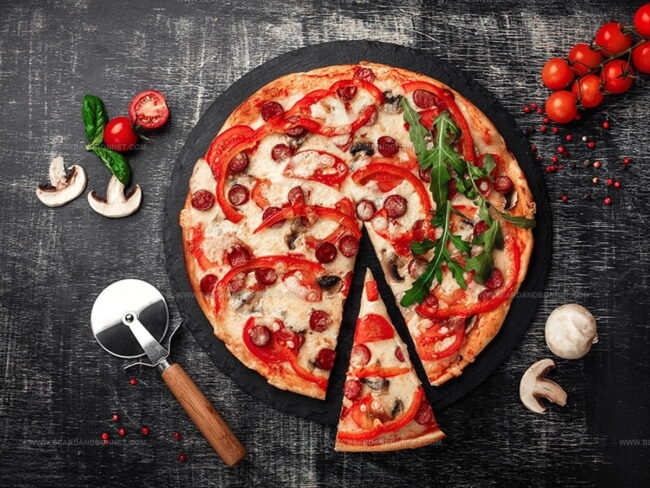
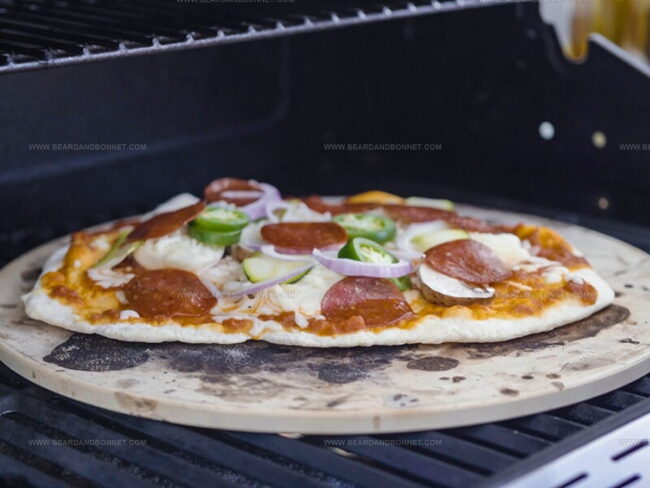
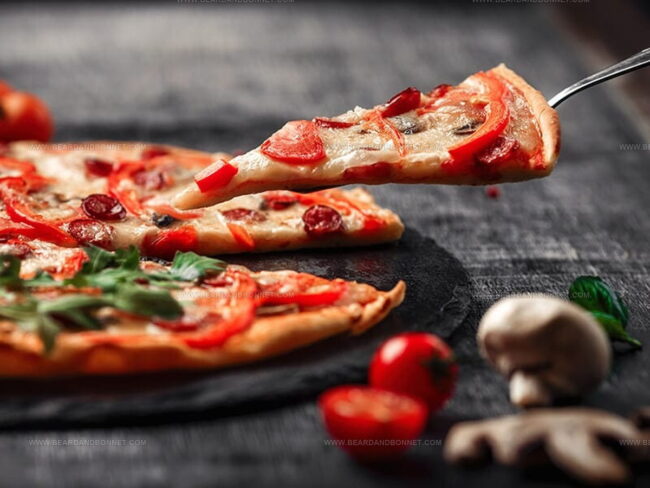
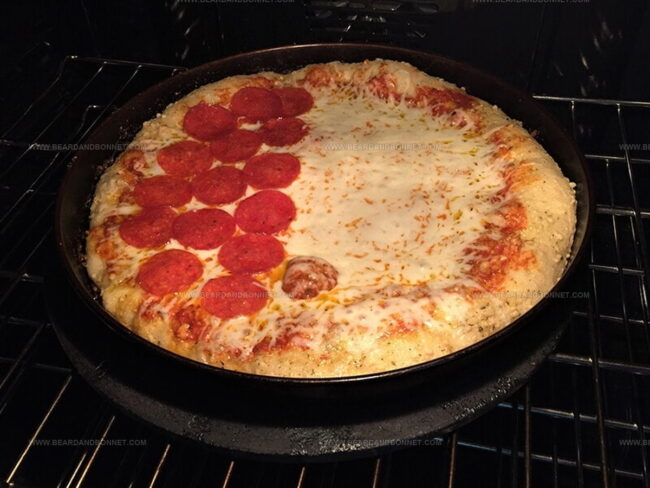
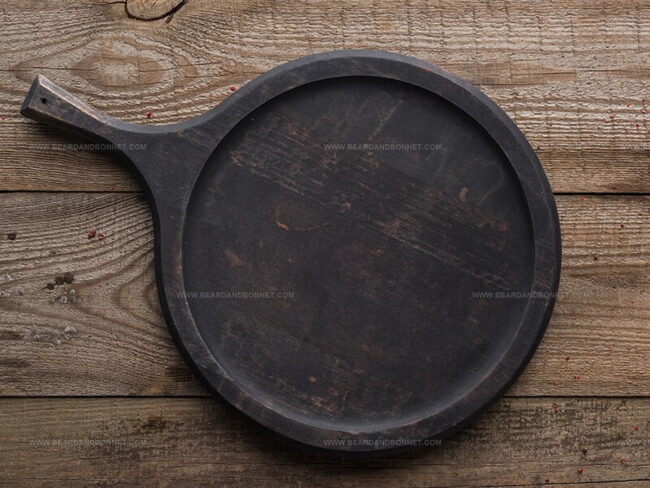
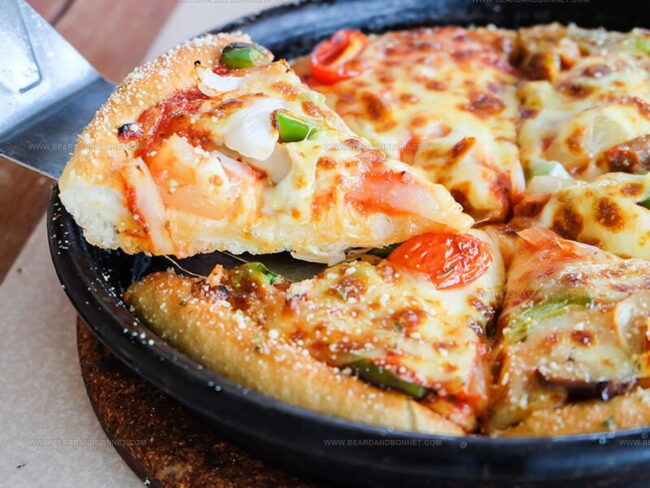
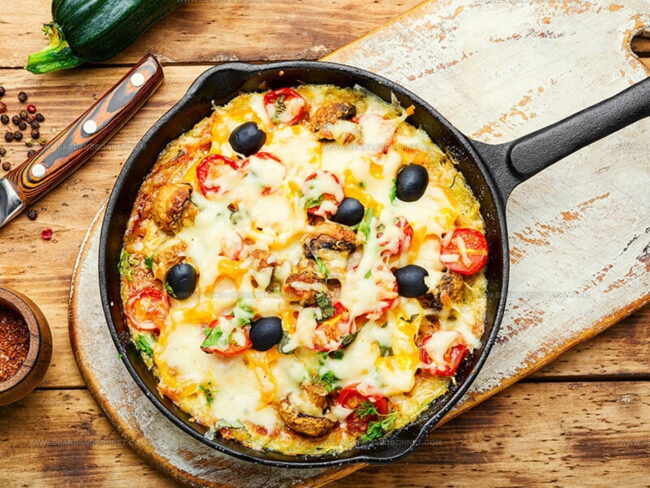
Jessica Martin
Recipe Developer & Food Writer
Expertise
Recipe Development, Food Styling and Photography, Seasonal and Local Ingredients, Vegetarian and Vegan Cuisine, Culinary Education
Education
Portland Community College
Oregon Culinary Institute
Jessica Martin is a talented food writer and recipe creator who specializes in seasonal cooking and approachable home baking.
Educated at Portland Community College with additional pastry training from Oregon Culinary Institute, Jessica’s culinary journey spans nearly a decade of creating and sharing flavorful recipes.
Her deep appreciation for local ingredients shapes each of her recipes, making them both accessible and inspiring. At Beard and Bonnet, Jessica uses her cheerful, down-to-earth writing to help readers effortlessly bring new tastes and creative dishes into their daily routines.